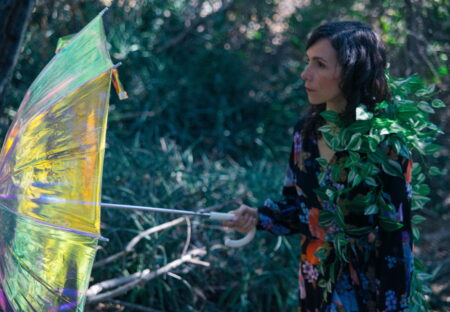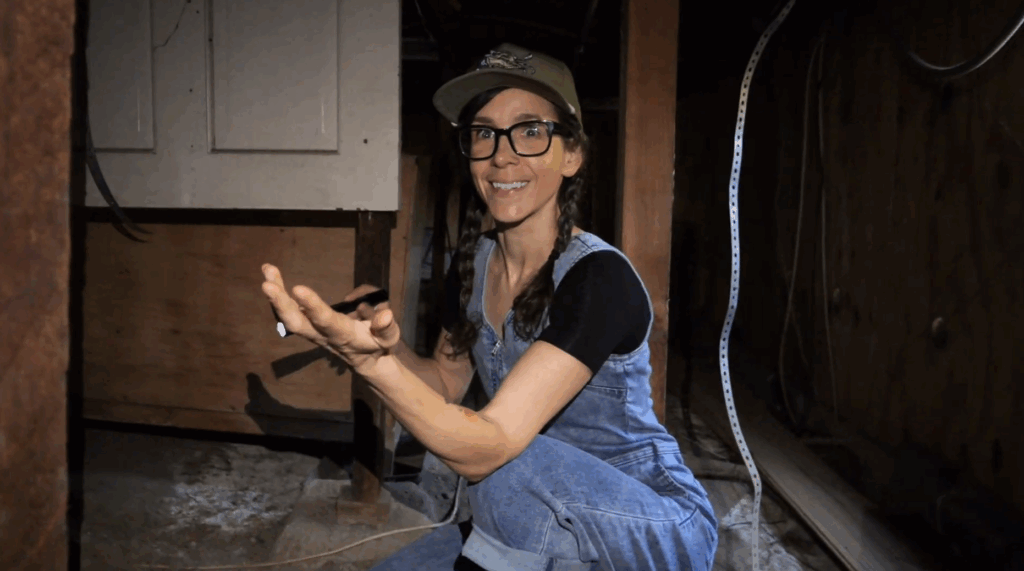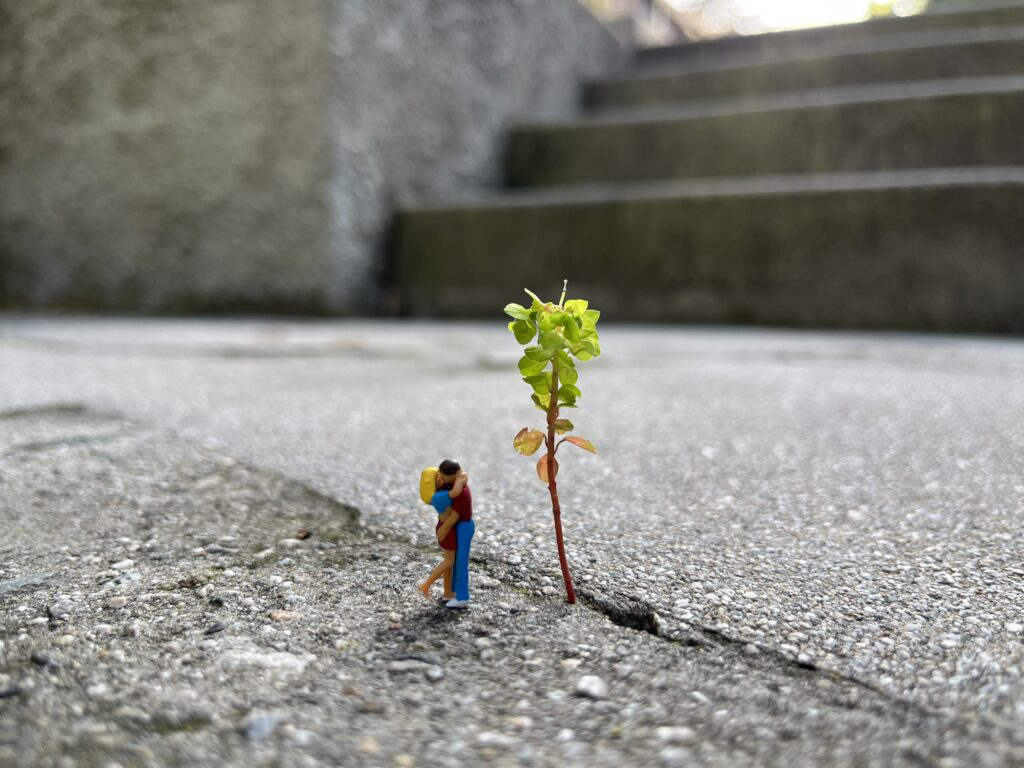10 Questions for Meg Favreau

Photo credit: Rebekkah Drake
“Help!” I yell, because I am clearly not qualified to deal with an unresponsive Tony Robbins. I am qualified to bring in hummus and in a couple, maybe three, years to teach high school social studies or history or whatever, if I can get back and finish my degree. If I make enough money to do that. If I bring in enough hummus enough times to enough Tony Robbinses.
—from Meg Favreau’s “Tony Robbins is Dead,” Vol. 66 issue 3
Tell us about one of the first pieces you wrote.
Around the age of six I wrote a story about someone convincing another person to walk into the Grand Canyon. I mostly remember the punchline ending—“I forgot to tell you the Colorado River has a drought!” So yes, it was a story about tricking someone into falling to their death, and yes, I did not understand what the Grand Canyon was actually like. I do at least 15% more research for my stories now.
What writer(s) or works have influenced the way you write now?
The work that inspires me the most is stuff that manages to successfully hold both humor and deep emotion. I first read George Saunders over 20 years ago when I was a senior in college, and I’ve consistently returned to his stories and discussions about writing since. I’ve also been a They Might Be Giants fan for years, and I think a lot about the magic trick of their songwriting—John Linnell in particular. He’s such a master at these circuitous, catchy songs with dark themes. They’re so fun to bop around to, and then you cue into the lyrics, and suddenly you realize it’s about mental illness or a man whose mom abandoned him.
What other professions have you worked in?
I’m fortunate that most of my post-college employment has been variations on writing. Now I work primarily as a screenwriter, but I’ve been a food writer, the editor of a personal finance website (while loaded up with student loans), a guidebook writer, a marketing writer for assisted living direct mail postcards, and a copywriter for QVC among other things. I also had exactly one paid acting job, which was for a reenactment on a “reality” show where I played a woman whose horse was getting repossessed.

Meg under her house for a horror short film.
What did you want to be when you were young?
Other than passing fascinations with being an archeologist and a hot dog salesman (not at the same time), I always wanted to be some sort of artist. Perhaps the most ridiculous period was in high school when I desperately wanted to be a musician despite having no musical talent. And yes, sure, these things can get better with practice. But when I was 16, I got aptitude testing, and out of 100 possible points on pitch recognition, I scored a five. I don’t think I’m quite that terrible, but it helped me realize that while I loved music, I didn’t really understand it (other than the rhythm of language). Most of what I loved about being a musician was actually other art forms—writing, performing, and visual art. And while it was crushing at the time, I’m sure it was a great relief to the guitar teacher I had been seeing.
What inspired you to write this piece?
Tony Robbins popped into my head when I was driving home from work one day—specifically what a tall man he is. It occurred to me he was so tall, in fact, that a smaller person could probably fit inside him. The idea really made me laugh, so I started writing as soon as I got home.
While that was the specific impetus for this story, I’ve also had a long-standing fascination with motivational speakers and the people who love them. Humans are messy, emotional, irrational, and flawed—it’s part of what makes life both so difficult and so beautifully rich. And yet we always want to believe it when someone confidently tells us we can be better. Motivational speakers are ultimately just salesmen, suggesting we can have incredible, optimized lives by sharing deeply curated versions of their own. Even though we know what they’re showing us likely isn’t real, we still want to believe them.
If you could work in another art form what would it be?

I almost switched to studying installation art mid-college, which likely would have been a disaster. But I love creating art and stories that feel encompassing—like they bring you a step out of everyday reality. It’s part of why I love filmmaking as well as writing.
But I also just like making… uh, stuff? I’ll go through phases—collage art, fancy hats, attaching fake foods to remote control cars, miniature dioramas with model railroad figurines. When writing has to be both play and work, I like having something in the back pocket that can be pure play.
Is there a city or place, real or imagined, that influences your writing?
I grew up in Northern New Hampshire, an area that was simultaneously gorgeous and deeply weird. It was a place where houses had their own graveyards, where people hung out at the town dump on Saturday mornings because there was nowhere else to socialize (while the adults talked, I watched the burn pit with the other kids), and where my backwoods cross-country skiing once led me to discovering a pile of what I believe were horse or cow skeletons, bones still fresh with blood. Even though my work isn’t always set in New Hampshire, I feel like the area has left a sensibility in my blood. Or maybe that’s just a tick-borne illness.

Do you have any rituals or traditions that you do in order to write?
A drink—usually tea or seltzer. Turning off the internet, or at least email and news sites. But I hold a lot of tension in my jaw, so perhaps my most important ritual is chewing this Turkish gum called Falim. It has no sweeteners, just a death gasp of flavor, and then it’s nothing but a hunk of gum. Every piece also has a Turkish love poem written on the wrapper.
On the editing side, I always have to do at least one pass on paper. There’s something about seeing the work on paper instead of on a screen that helps me give a deeper read.
What are you working on currently?
I like to actively focus on one or two projects while two or three others marinate in the back of my brain. My current slate includes my first novel (a near-future detective story), a few screenplays, and a short horror film I wrote and directed earlier this year; that’s almost finished post-production. Plus the odd short story or two.
What are you reading right now?
I’ve been reading a lot of escapist, world-building sci-fi. I just finished Adrian Tchaikovsky’s Children of Time series, and before that I tore through Ann Leckie’s Ancillary series. I believe it was Yume Kitasei’s The Stardust Grail before that. I also recently read Debbie Urbanski’s Portalmania, and it absolutely wrecked me. Beautiful and crushing. Some of the stories felt like they were practically vibrating.
On the non-fiction side, the last thing I read was Rebecca Solnit’s Hope in the Dark. I think that’s probably, uh, self-explanatory. But I am a big believer in maintaining corners of hope and joy in difficult times. Otherwise, what’s the point of living in this beautiful and chaotic world?
MEG FAVREAU is a writer, artist, and filmmaker originally from the birch-fingered clutches of northern New Hampshire. Her fiction, humor pieces, and essays have appeared in publications including X-R-A-Y Lit Mag, 45th Parallel, The New Yorker’s Daily Shouts, McSweeney’s Internet Tendency, Real Simple, The American Bystander, and Eating Well; and her most recent film project was co-writing the animated feature The Twits, which will be released on Netflix later this year. Meg currently lives in Los Angeles with her partner, cats, and collection of fake hands.



